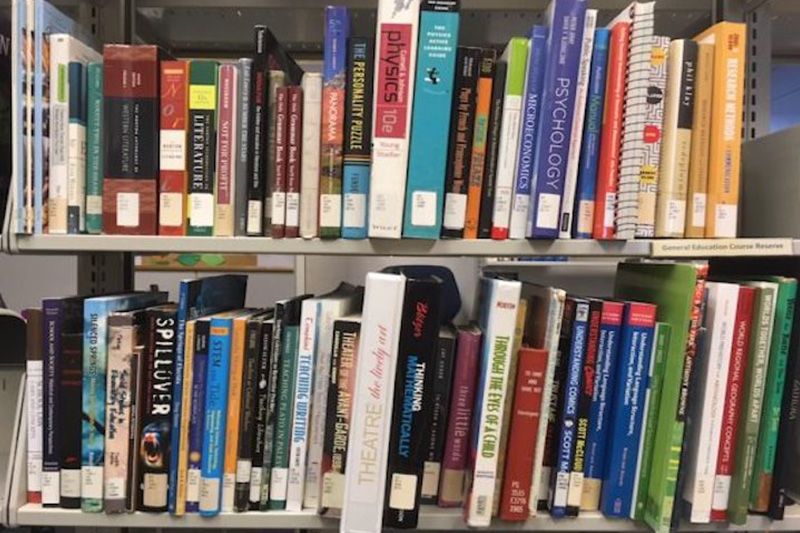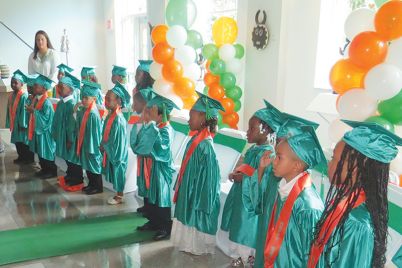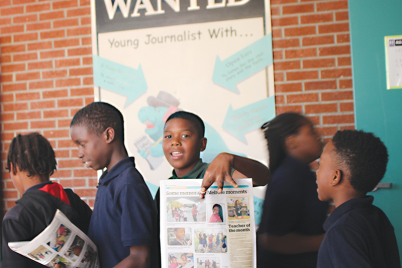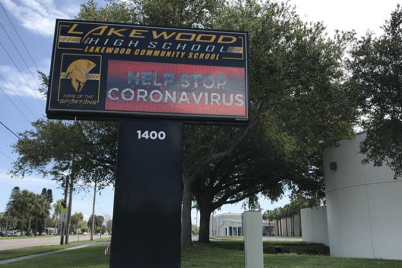ST. PETERSBURG — A textbook affordability initiative launched to reduce the costs of course materials at USF’s St. Petersburg campus has saved the student body more than $1.08 million over the past five years.
Begun in 2016 to address the rising costs of textbooks and other educational materials used in classrooms, the initiative has spurred the campus to amass a combination of textbooks on reserve, e-books, and online journal articles available to students.
“We are always trying to find new ways that make education affordable to students who are already working so hard and trying to save as much money as they can,” said Cathi Cardwell, regional associate vice chancellor of academic affairs and dean of the Nelson Poynter Memorial Library.
Spearheaded by staff at the Nelson Poynter Memorial Library, the textbook affordability initiative seeks to reduce costs for students by:
- Expanding textbooks in the library’s reserve collection
- Generating awareness around the availability of e-books and other open educational resources as alternatives for traditional textbooks
- Collaborating with faculty to find and incorporate affordable course material options that sustain academic rigor
Before the initiative, there were only 20 textbooks in the reserve collection that students could check out for three hours at a time. Now there are around 365.
This dramatic rise was accomplished through a $3,500 grant from Town & Gown, an organization that promotes understanding between USF’s St. Petersburg campus and the community. USF Libraries provided additional funds to acquire even more textbooks. Some faculty members donated extra copies as well. Several students even contributed their textbooks rather than sell them back once they completed a class.
As for e-books, USF Libraries has assembled a collection of thousands that span a multitude of subjects and can be adopted by faculty at all USF campuses. If new textbooks become available electronically, USF Libraries try to purchase them so students have free access. This academic year, 30 new e-books were purchased for the St. Petersburg campus.
“This initiative is a really good example of how a discipline can shift and change to meet students’ needs, because libraries’ budgets were never spent on textbooks and course materials,” said Cardwell. “However, with the sharp rise in prices, university libraries have realized they needed to play a part in solving this problem.”
When the initiative began, a series of faculty workshops were offered to reduce textbook costs by providing strategies to acquire available resources. About 20 faculty members took part in discussions ranging from copyright and fair use to electronic textbooks and licensed content – all with the purpose of helping them rethink their courses and content.
Since then, library staff works individually with faculty members to raise awareness of alternative teaching content the campus has access to and work to revamp course material by incorporating greater open education resources.
“Our librarians review the course syllabus and then investigate affordable materials with faculty that will cover the appropriate content they want to convey in the classroom, ensure it is as high quality as possible and reduce costly fees for students,” said Kaya van Beynen, the associate dean of the USF Libraries.
More than $1 million dollars in total savings is eye-opening. But a more telling number, and one van Beynen likes to use to illustrate the success of the initiative, is the drop in the cost of course materials per credit hour over the last five years.
“What was once around $44 is now just $26,” she said. “When you multiply that by 12 or 15 hours taken in a semester, it comes out to hundreds of dollars of savings for each of our students.”
Learn more about textbook affordability at USF by visiting https://tap.usf.edu/








